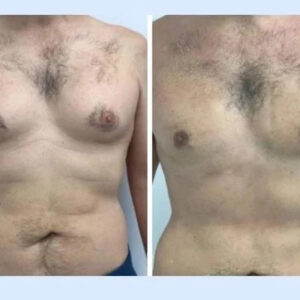Wound care innovation is no longer limited to new dressings or antiseptics; it now integrates technology, data, and advanced materials to accelerate recovery and improve quality of life for patients.
According to a World Health Organization (WHO) 2024 report, chronic wounds affect nearly 40 million people worldwide, creating a global healthcare challenge. This has driven significant investment into technologies that make treatment more effective and accessible.
Understanding how technology is reshaping wound treatment not only helps healthcare professionals adapt but also ensures patients benefit from faster, safer, and more personalized care.
Digital tools transforming wound management
The rise of digital healthcare has brought major changes to wound treatment. Smartphones and specialized applications now allow patients and caregivers to track wound healing progress in real time.
High-resolution photos and cloud-based platforms enable clinicians to assess injuries remotely, ensuring timely interventions without requiring the patient to visit hospitals constantly.
Artificial intelligence also plays a vital role. Algorithms can analyze wound images, detect complications early, and suggest treatment adjustments. This reduces the risk of infection and accelerates recovery.
For clinics like Cicatrize, digital solutions help bridge the gap between patients and healthcare providers, ensuring continuity of care and real-time communication.
Wearable devices further enhance digital monitoring. Sensors embedded in dressings can measure moisture, temperature, and pH levels, alerting clinicians when conditions are no longer favorable for healing.
Together, these technologies transform wound management into a proactive, data-driven practice that increases efficiency and patient comfort.
Advanced materials and therapies in wound healing
Another dimension of wound care innovation involves materials and therapies designed to optimize healing conditions. Modern dressings go beyond simple coverage; they actively promote tissue regeneration.
Hydrocolloid, alginate, and antimicrobial dressings create environments that prevent infection and stimulate faster recovery. Some even release medication gradually, reducing the need for repeated interventions.
Negative pressure wound therapy (NPWT) is another breakthrough. By applying controlled suction, it removes excess fluids and increases blood circulation, significantly improving healing rates.
Stem cell treatments and tissue engineering are expanding possibilities further. Researchers are developing bioengineered skin and scaffolds that integrate with the body to repair complex wounds.
Laser therapy and oxygen treatments are also gaining traction, particularly in managing diabetic ulcers and other chronic injuries. These methods stimulate blood flow and enhance cellular repair.
Ultimately, these advanced approaches underline that innovation in wound care is not just technological, but biological and regenerative as well.
Patient experience and emotional impact
Healing is not only a physical process. The patient’s psychological state also influences recovery, and wound care innovation increasingly addresses the emotional side of treatment.
Chronic wounds, especially those that limit mobility, often lead to frustration, stress, and even depression. Providing emotional support becomes as essential as providing physical treatment.
Interestingly, psychological reactions to wounds can mirror subconscious fears, similar to experiences like sonhar com o avião caindo. Just as such dreams evoke a sense of insecurity, untreated or slow-healing wounds can create anxiety and fear in patients.
Digital communication platforms now allow clinicians to provide reassurance and guidance, helping patients feel less isolated. This consistent support improves adherence to treatment and boosts emotional resilience.
Education also plays a key role. When patients understand how their treatment works and track their own progress, they feel empowered, which directly contributes to better outcomes.
By addressing both body and mind, modern wound care builds holistic recovery paths that respect the complexity of human health.
The role of telemedicine in wound treatment
Telemedicine has become an essential part of healthcare delivery, particularly in wound management. Its integration into care models has expanded access and reduced inequalities.
For patients in remote or underserved regions, telemedicine eliminates the need for frequent travel to specialized centers. Through video consultations, clinicians can assess wounds, prescribe treatment, and even supervise dressing changes.
The COVID-19 pandemic accelerated this shift, proving that virtual care could maintain quality while increasing safety and convenience. Many hospitals now integrate telemedicine permanently into their wound care programs.
One significant advantage is speed. Instead of waiting for in-person appointments, patients receive timely advice that prevents complications from escalating.
Telemedicine also allows for collaborative care. Specialists from different regions can join consultations, bringing expertise that might otherwise be unavailable locally.
This model strengthens inclusivity, ensuring that wound care innovation benefits a larger number of patients worldwide.
Future directions of wound care innovation
The future of wound care innovation is deeply connected to emerging technologies and new treatment models. Artificial intelligence, robotics, and biotechnology will shape the next generation of solutions.
3D printing, for instance, is already being used to create customized wound dressings and scaffolds, perfectly adapted to each patient’s needs.
Nanotechnology is another promising frontier. Researchers are developing nanoparticles that deliver medication directly to the wound site, increasing efficiency and reducing side effects.
Integration with big data will allow predictive models to anticipate complications before they occur. This preventive approach could significantly reduce hospitalizations and healthcare costs.
On a systemic level, combining telemedicine, advanced therapies, and digital monitoring will lead to fully connected wound care ecosystems. Patients, clinicians, and caregivers will be able to collaborate seamlessly.
These innovations highlight a future where wound treatment is faster, smarter, and more humane, transforming recovery into a truly personalized experience.
Redefining recovery through innovation
The evolution of wound care innovation demonstrates that healthcare is moving toward a more holistic, patient-centered model. Technology and advanced therapies are not just treating wounds but transforming the way recovery is experienced.
By integrating digital tools, advanced materials, and emotional support, modern wound care offers patients both safety and dignity in their healing journey.
The future of wound management lies in combining science, empathy, and accessibility — ensuring that innovation continues to empower patients toward faster and more complete recovery.



